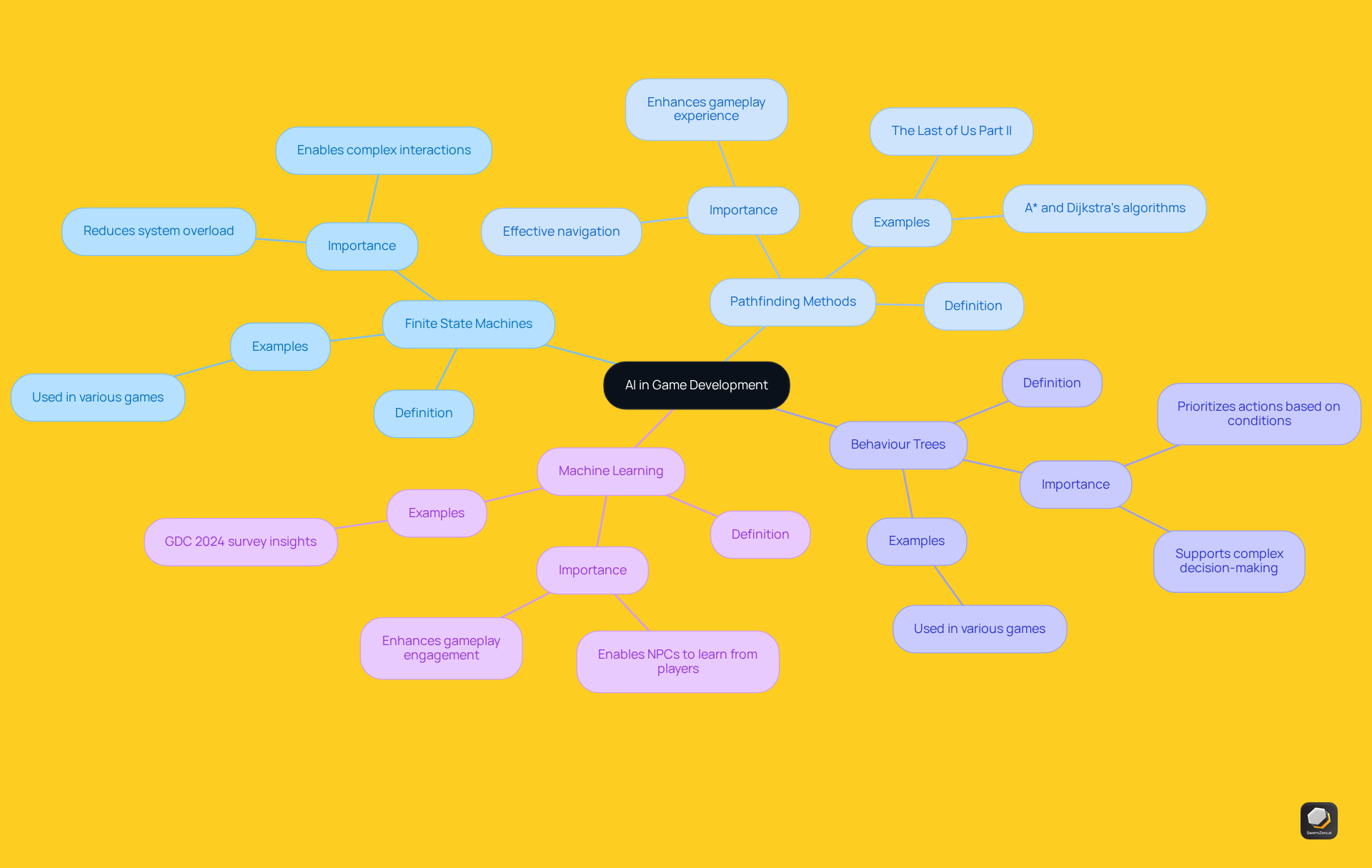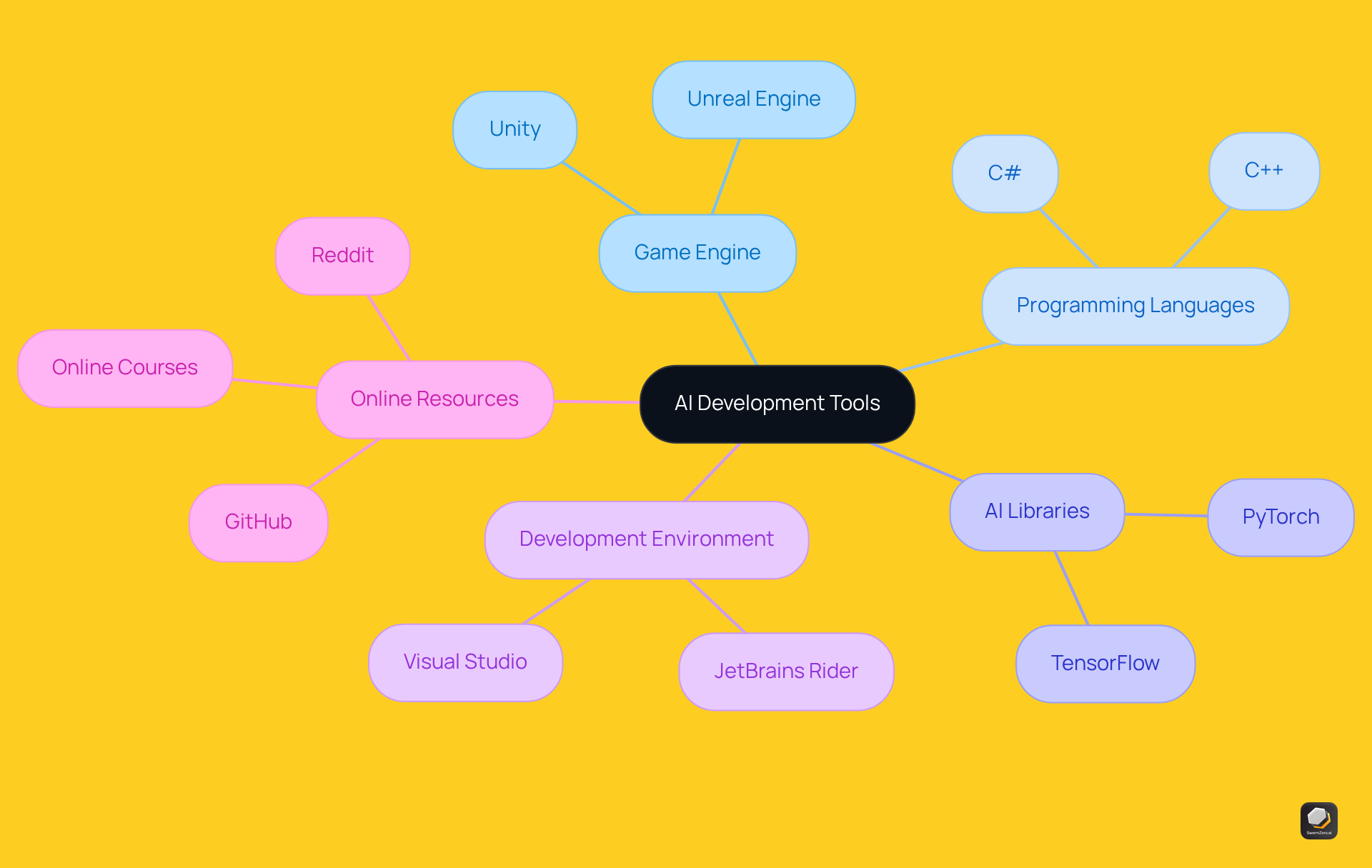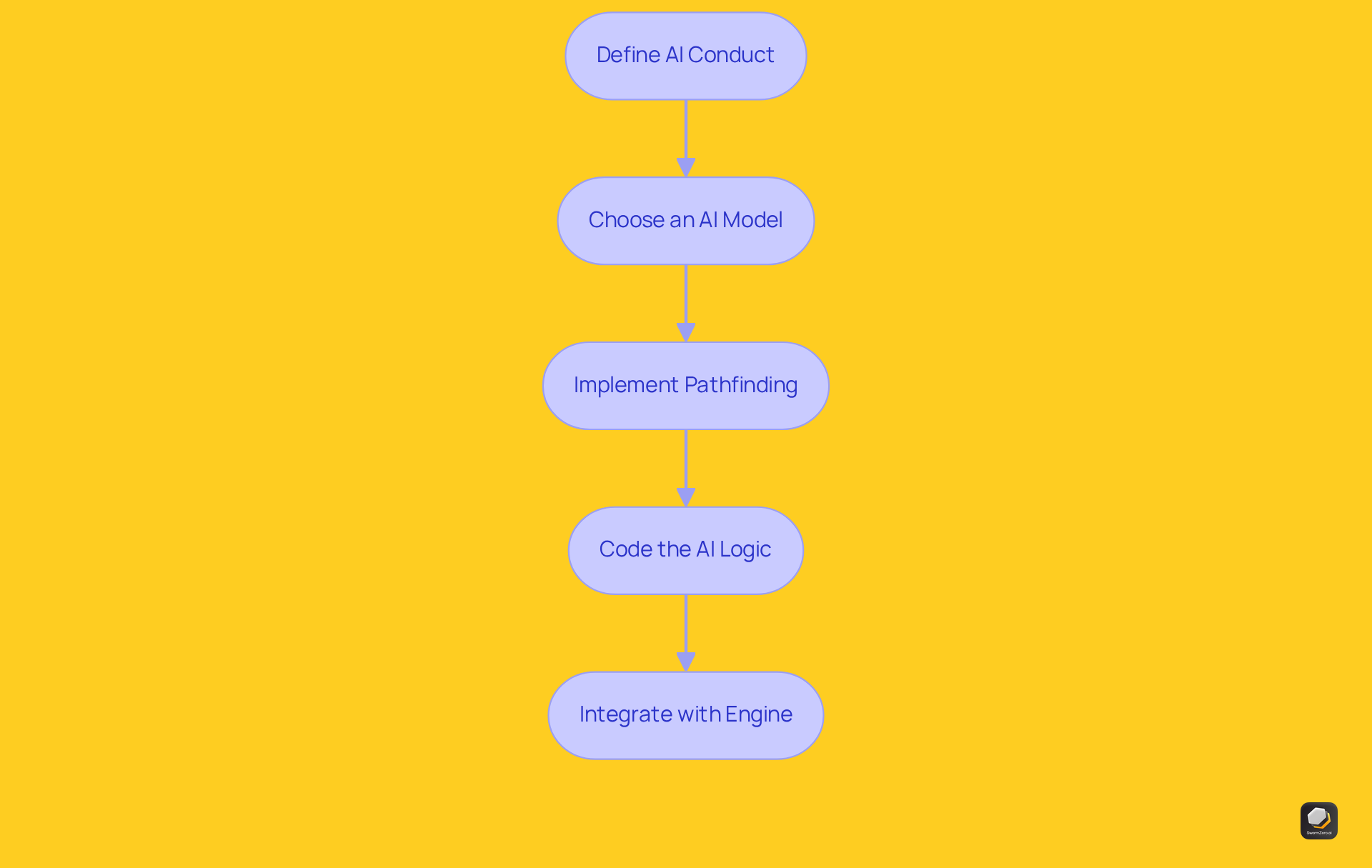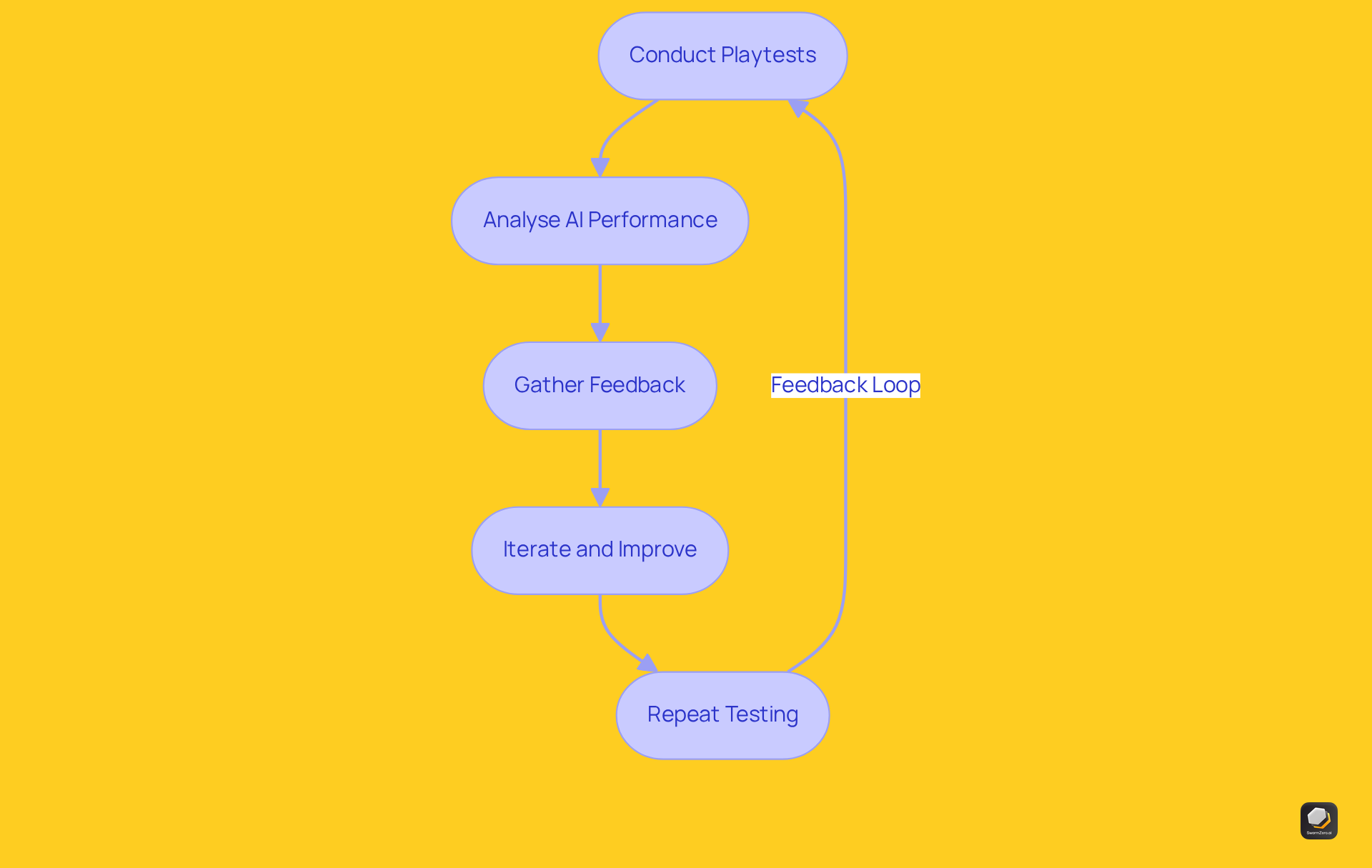4 Steps on How to Create an AI for a Game
Learn how to create an AI for a game with essential steps and tools for effective development.

Key Highlights:
- Game AI refers to techniques for developing intelligent behaviours in non-player characters (NPCs).
- Key AI concepts include Finite State Machines (FSMs), pathfinding methods, behaviour trees, and machine learning.
- Finite State Machines help manage NPC states, while pathfinding algorithms like A* enable effective navigation.
- Behaviour trees facilitate complex decision-making for NPC actions, enhancing gameplay realism.
- Machine learning allows NPCs to adapt based on player behaviour, with a significant industry shift towards generative AI tools.
- Essential tools for AI development include game engines (Unity, Unreal), programming languages (C#, C++), and AI libraries (TensorFlow, PyTorch).
- Steps to create game AI involve defining AI behaviour, choosing an AI model, implementing pathfinding, coding AI logic, and integrating with the game engine.
- Testing and refining AI includes conducting playtests, analysing performance, gathering feedback, and iterating on improvements.
- The global AI in entertainment market is projected to reach USD 25.3 billion by 2034, indicating the growing importance of AI in gaming.
Introduction
Creating an engaging game experience hinges on the sophistication of artificial intelligence (AI) that drives non-player characters (NPCs). As the gaming industry evolves, understanding the fundamentals of AI—from finite state machines to machine learning—becomes crucial for developers aiming to enhance gameplay. This article outlines a step-by-step guide to crafting an AI that not only responds intelligently but also adapts to player behaviour. This raises the question: how can developers ensure their AI remains both effective and engaging in an increasingly competitive landscape?
Understand the Basics of AI in Game Development
To understand how to create an AI for a game, it is essential to grasp the meaning of AI within this context. Game AI typically refers to the methods and techniques used to develop responsive, adaptive, and intelligent behaviours in non-player characters (NPCs). Key concepts include:
- Finite State Machines (FSMs): A computational model that facilitates the design of algorithms capable of existing in one of a finite number of states at any time. FSMs play a crucial role in artificial intelligence for interactive applications, enabling developers to craft intricate interactions without overwhelming the system.
- Pathfinding Methods: Techniques that allow NPCs to navigate the virtual world effectively, such as A* or Dijkstra's algorithm. The implementation of pathfinding algorithms is evident in popular titles like 'The Last of Us Part II,' where AI-driven enemies adapt to player actions, thereby enhancing gameplay.
- Behaviour Trees: A hierarchical model that supports complex decision-making processes in NPCs, prioritising actions based on various conditions to enrich realism in gameplay.
- Machine Learning: Advanced applications leverage machine learning to enable NPCs to learn from player behaviour and adjust accordingly. According to the Game Developers Conference (GDC) 2024 survey, nearly half of respondents are utilising generative AI tools in their workplaces, reflecting a notable shift towards more intelligent and engaging gameplay.
Familiarising yourself with these concepts will provide a solid foundation for understanding how to create an AI for a game in the subsequent steps. Additionally, the global AI in entertainment development market is projected to reach USD 25.3 billion by the end of 2034, underscoring the significance and value of AI in the gaming industry.

Gather Essential Tools and Resources for AI Development
To understand how to create an AI for a game, you require a combination of development tools and resources. Here’s a list of essential items:
- Game Engine: Select a game engine that supports AI development, such as Unity or Unreal Engine. Both offer built-in AI capabilities and extensive documentation.
- Programming Languages: Familiarise yourself with languages commonly used in development, including C# for Unity and C++ for Unreal Engine.
- AI Libraries: Consider incorporating libraries like TensorFlow or PyTorch if you intend to implement machine learning techniques.
- Development Environment: Establish an Integrated Development Environment (IDE) such as Visual Studio or JetBrains Rider to write and debug your code efficiently.
- Online Resources: Leverage platforms like GitHub for code examples, forums like Reddit for community support, and online courses for structured learning.
By collecting these tools, you will be well-prepared for the subsequent phases in learning how to create an AI for a game and implementing your artificial intelligence.

Design and Implement Your Game AI
With a solid understanding of AI concepts and the necessary tools in hand, you are now ready to learn how to create an AI for a game. Follow these essential steps:
-
Define AI Conduct: Determine the actions you want your AI to exhibit. Should NPCs patrol an area, chase the player, or interact with objects? As Nicholas Hall, CEO of IESA, emphasises, "With increasing access to new technologies, more people are getting into gaming, making AI's role in enhancing gameplay even more critical."
-
Choose an AI Model: Based on the characteristics outlined, select a suitable AI model. For straightforward actions, a finite state machine may suffice. For more complex interactions, consider utilising behaviour trees. Notably, industry insights reveal that 80% of users engage with content based on AI-driven recommendations, underscoring the significance of effective AI models in captivating players.
-
Implement Pathfinding: Employ pathfinding methods to enable NPCs to traverse the game world. Implement the A* algorithm or another effective method to guide NPCs in finding the optimal route to their targets. This realism in movement is crucial, especially as the gaming market continues to expand, particularly in regions like Africa, where gaming revenue is expected to nearly double this year.
-
Code the AI Logic: Write the code governing your AI's behaviour. This involves creating scripts that define how the AI responds to user actions and environmental changes. As AI tools become increasingly prevalent, they can significantly reduce the time developers spend on tasks, allowing a greater focus on creating engaging experiences.
-
Integrate with Engine: Ensure that your AI scripts are seamlessly integrated with your engine, facilitating real-time interactions and updates. This integration is vital for maintaining a smooth gaming experience, particularly as the industry evolves towards more interactive and immersive gameplay.
By following these steps on how to create an AI for a game, you will create a functional AI that enhances your interactive experience and boosts user engagement, aligning with broader trends in the gaming industry.

Test and Refine Your AI for Optimal Performance
After understanding how to create an AI for a game, the next step is to rigorously test and refine it. Here’s how to proceed:
- Conduct Playtests: Invite players to engage with your game and observe their interactions with the AI. Take detailed notes on any unforeseen actions or issues that arise.
- Analyse AI Performance: Utilise debugging tools to assess your AI's performance during gameplay. Identify areas where it may be underperforming or exhibiting erratic behaviour.
- Gather Feedback: Collect insights from playtesters regarding their experience with the AI. Pose specific questions about its actions and the influence on their gameplay.
- Iterate and Improve: Based on your observations and the feedback received, make necessary adjustments to your AI's logic and behaviour. This may involve tweaking parameters, refining algorithms, or even redesigning certain aspects of the AI.
- Repeat Testing: After implementing changes, conduct further playtests to ensure that the refinements have enhanced the AI's performance and that no new issues have emerged.
By continuously testing and refining your understanding of how to create an AI for a game, you will significantly enhance its effectiveness, ensuring a more engaging experience for players.

Conclusion
Creating an AI for a game necessitates a multifaceted approach that integrates foundational concepts, the right tools, AI logic design and implementation, and ongoing testing and refinement. The core of effective game AI is its capacity to deliver responsive and engaging experiences for players, establishing it as a vital component in contemporary game development.
Key insights underscore the significance of:
- Finite state machines
- Pathfinding methods
- Behaviour trees
- Machine learning
in developing intelligent NPCs. By selecting suitable tools such as Unity or Unreal Engine and utilising programming languages tailored for AI development, developers can establish a robust foundation for their projects. Furthermore, a structured design approach coupled with continuous testing guarantees that the AI not only operates as intended but also adapts to player interactions, thereby enhancing the overall gaming experience.
As the gaming landscape evolves, the importance of AI remains paramount. Adopting these strategies and best practises in AI development will not only elevate gameplay but also align with current industry trends. Developers are urged to explore AI techniques more deeply, leverage available resources, and remain flexible to foster innovation that captivates players and keeps them engaged in the ever-expanding world of gaming.
Frequently Asked Questions
What is game AI?
Game AI refers to the methods and techniques used to develop responsive, adaptive, and intelligent behaviours in non-player characters (NPCs) within video games.
What are Finite State Machines (FSMs) in game AI?
Finite State Machines (FSMs) are computational models that allow the design of algorithms capable of existing in one of a finite number of states at any time, enabling developers to create intricate interactions in games without overwhelming the system.
How do pathfinding methods work in game AI?
Pathfinding methods are techniques that allow NPCs to navigate the virtual world effectively, using algorithms such as A* or Dijkstra's algorithm. These methods are utilised in games like 'The Last of Us Part II,' where AI-driven enemies adapt to player actions.
What are Behaviour Trees?
Behaviour Trees are a hierarchical model that supports complex decision-making processes in NPCs, prioritising actions based on various conditions to enhance realism in gameplay.
How is machine learning applied in game AI?
Machine learning is used in game AI to enable NPCs to learn from player behaviour and adjust their actions accordingly, making gameplay more intelligent and engaging.
What does the GDC 2024 survey indicate about the use of AI in game development?
The GDC 2024 survey indicates that nearly half of the respondents are utilising generative AI tools in their workplaces, reflecting a significant shift towards more intelligent gameplay.
What is the projected market value of AI in entertainment development by 2034?
The global AI in entertainment development market is projected to reach USD 25.3 billion by the end of 2034, highlighting the importance and value of AI in the gaming industry.
List of Sources
- Understand the Basics of AI in Game Development
- Artificial Intelligence (AI) in Game Development Market to Reach USD 25.3 Bn by 2034 (https://dimensionmarketresearch.com/report/ai-in-game-development-market)
- Design and Implement Your Game AI
- 80 Level Research: Stats & Trends in Game Development in 2023 (https://80.lv/articles/80-level-research-stats-trends-in-game-development-in-2023)
- AI in Entertainment: Key Statistics and Industry Trends - SEO Sandwitch (https://seosandwitch.com/ai-in-entertainment-stats)




